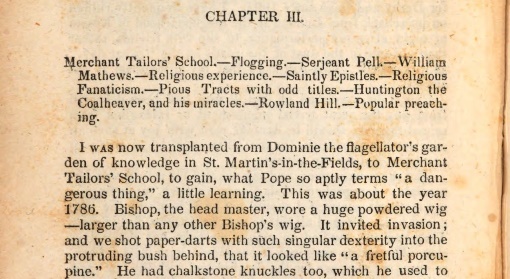| The Public Paperfolding History Project
Last updated 21/1/2024 x |
|||||||
| Memoirs of Charles Mathews, Comedian, 1835 | |||||||
'Memoirs of Charles Mathews, Comedian' which was written (or perhaps only edited) by his wife, Anne Jackson Mathews, was published by R Bentley in London and Lea and Blanchard in Philadelphia in 1839 four years after Mathew's death in 1835. Page 30 of Volume 1 of the Philadelphia edition states 'and we shot paper-darts' into the head master's wig so 'that it looked like a fretful porcupine'. This activity is dated to 'about the year 1786' when Mathews would have been 10 years old. By comparing this passage with similar events related in Part 1 of 'Parriana' by E H Barker, which was published by Henry Colburn in London in 1828, it is possible to be fairly certain that the paper-darts referred to here were in fact of the Paper Dart / Arrow design. However, the similarity of the passages in both books might be taken to suggest that one was copied from the other, putting the 1786 date in question. **********
********** |
|||||||
